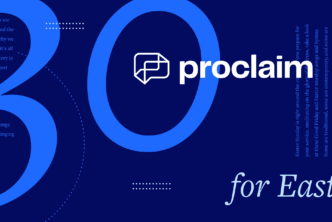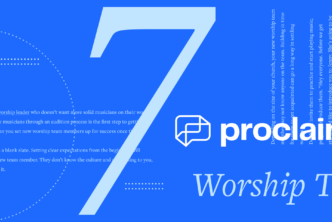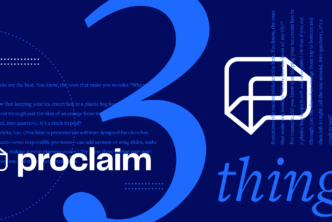Elevation Worship, a musical group from Elevation Church in Charlotte, NC, released “O Come to the Altar” in early 2016. As a mid-tempo ballad with a melody in an accessible range, the song has been well received by churches worldwide. Lyrically, it is an an arms-wide-open invitation from Jesus that is joyous to sing.
Here’s an assessment of its message, followed by some thoughts on the music and tips for leading the song.
The message
“O Come to the Altar” is a message of hope to the hurting, having at its center a declaration of of our mighty Savior’s redeeming work on the cross. Whereas the verses speak of our pains, sins, and shortcomings, the chorus speaks of where we find release from those burdens: the altar of God.
Verse 1
Are you hurting and broken within?s
Overwhelmed by the weight of your sin?
Jesus is calling
Have you come to the end of yourself
Do you thirst for a drink from the well?
Jesus is calling
Chorus
O come to the altar
The Father’s arms are open wide
Forgiveness was bought with
The precious blood of Jesus Christ
What is the altar?
In the Old Testament, the altar was where God’s people brought sacrifices to atone for their sins. God had a variety of instructions for sacrifices, but one constant among all the forms was that they had to happen repeatedly. The Israelites, like us, sinned over and over, and so they needed to atone for their sins over and over.
In the New Testament, God gives a new covenant, one in which the altar is a cross. And on that cross Jesus died for our sins once and for all. Hebrews 9:13-14 explains how the sacrificial system finds its fulfillment permanently in Christ:
For if the blood of goats and bulls, and the sprinkling of defiled persons with the ashes of a heifer, sanctify for the purification of the flesh, how much more will the blood of Christ, who through the eternal Spirit offered himself without blemish to God, purify our conscience from dead works to serve the living God.
“Oh Come to the Altar” presents God’s altar as the place where we find forgiveness from our sins and respite from our burdens. It is a wonderful, powerful reminder of the comfort of the gospel.
The bridge: a response of praise
Seeing as the whole song is a description of this gracious exchange—our sin for God’s forgiveness—it’s fitting that the bridge is a response of praise. Borrowing language from Psalm 95:6, “Oh come, let us worship and bow down; let us kneel before the Lord, our Maker!” it goes:
Oh what a Savior
Isn’t He wonderful?
Sing hallelujah, Christ is risen
Bow down before Him
For He is Lord of all
Sing hallelujah, Christ is risen
It’s hard to think of a better song to use after a sermon on the gospel and God’s love for broken sinners. “O Come To The Altar” has a similar theme to “Just As I Am,” a song that was featured at so many Billy Graham crusades.
The music
The verses, in the song’s 6/8 meter, have a wonderful cadence to them that sways your whole being and pulls you along.
Interestingly, the chorus doesn’t differ dynamically from the verses very much—doesn’t lift to a higher range like many choruses do. However, it still feels great to sing, and the notes ascend in such a way that the refrain is memorable and accessible to congregations.
The bridge is strong both for its parallelism and verbiage. The way the writers utilize the phrases “Isn’t he wonderful?” and “Isn’t he beautiful?” is reminiscent of the classic worship song “Isn’t He” by Terry Clark. And the phrase “Sing hallelujah” is instantly familiar. It’s a biblical phrase, but it also carries a sense of nostalgia, since it was a very common phrase in worship songs from the ’80s and ’90s. That said, the bridge still feels new.
Resources for Leading
If you lead this song in your church, here are some resources that may be helpful to you:
- Worship leading tip from Jake Gosselin: “I would recommend leading this song in the key of F or G if you are a male vocalist and D or E if you are a female vocalist. On the album, they play it in B. In my opinion, it is an awkward key for your average small to mid-sized congregation. If I were leading, I would play it in the key of F and capo the 5th fret and play in the key of C.”
- Song devotional from the Worship Initiative
- Video tutorials from Elevation Church, where the song originated. There are videos for multiple roles.
- Steven Furtick, one of the song’s writers, on its personal impact on his life. Furtick is the pastor of Elevation Church.
This is a guest post by music professionals Cody Norris and Stephen Folden.
Photo by rawpixel.com on Unsplash.




